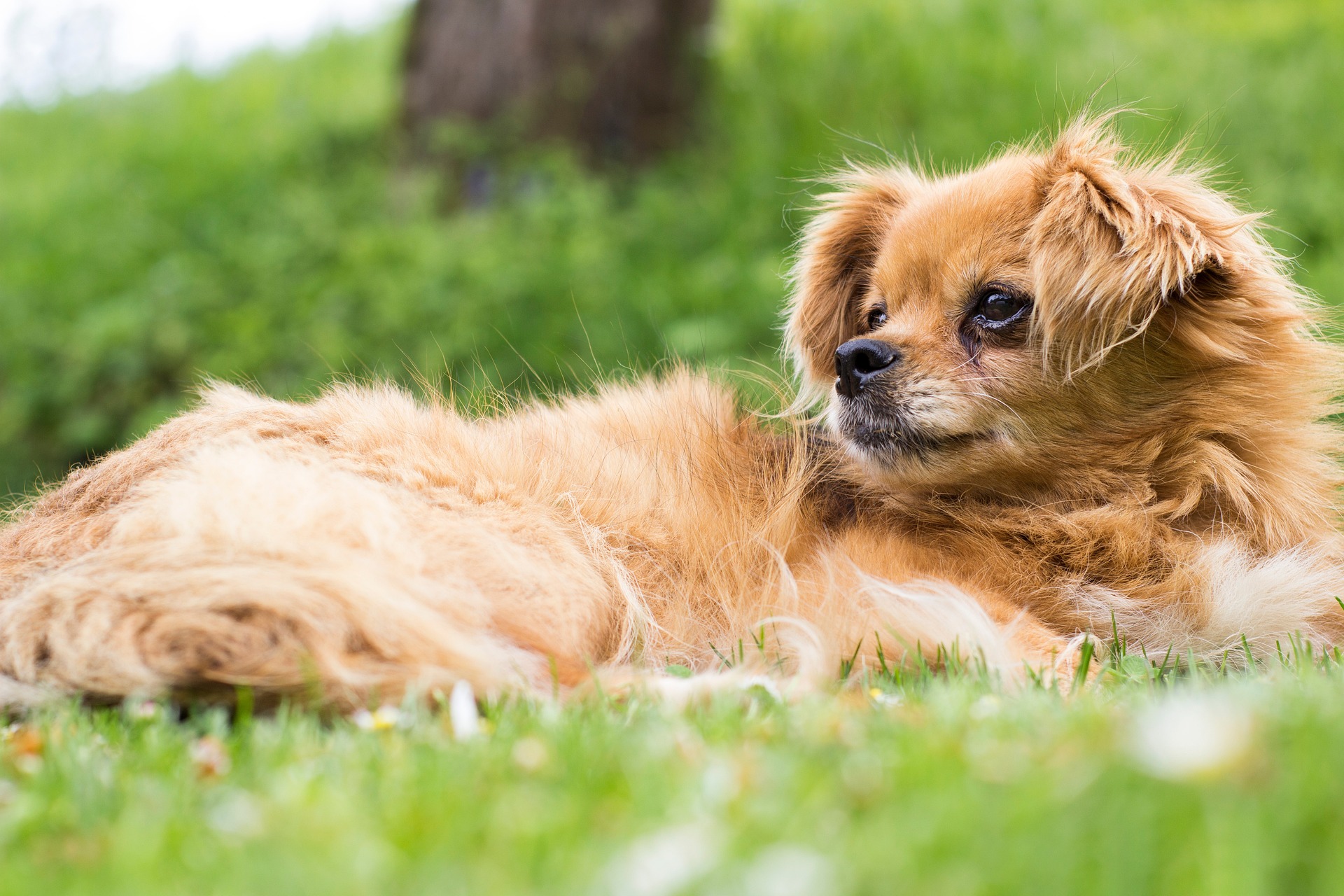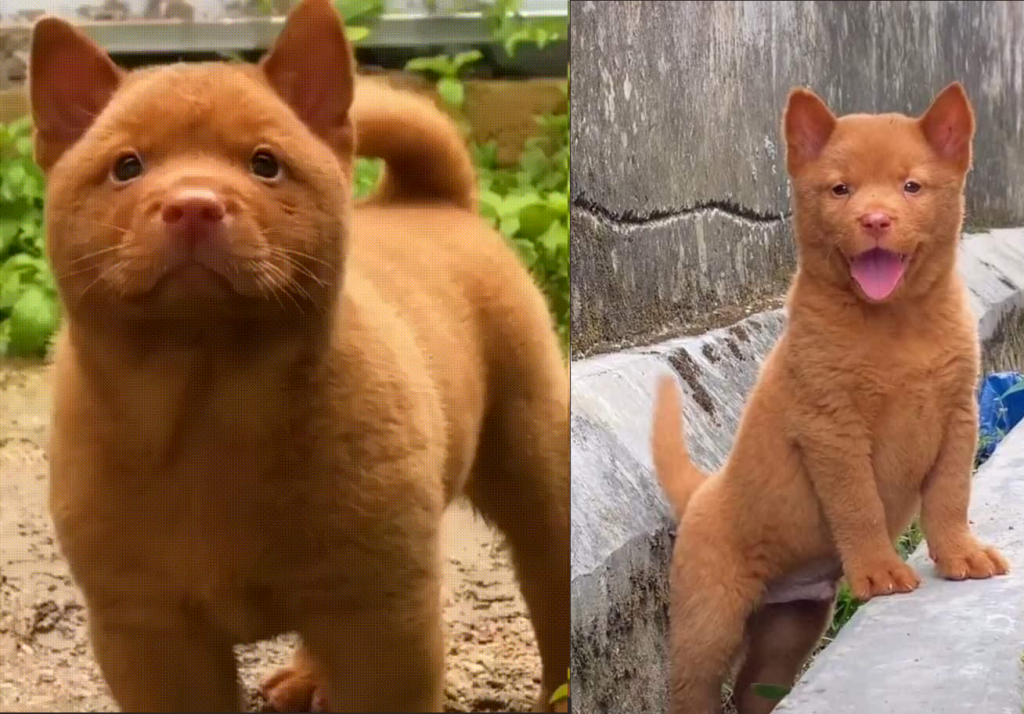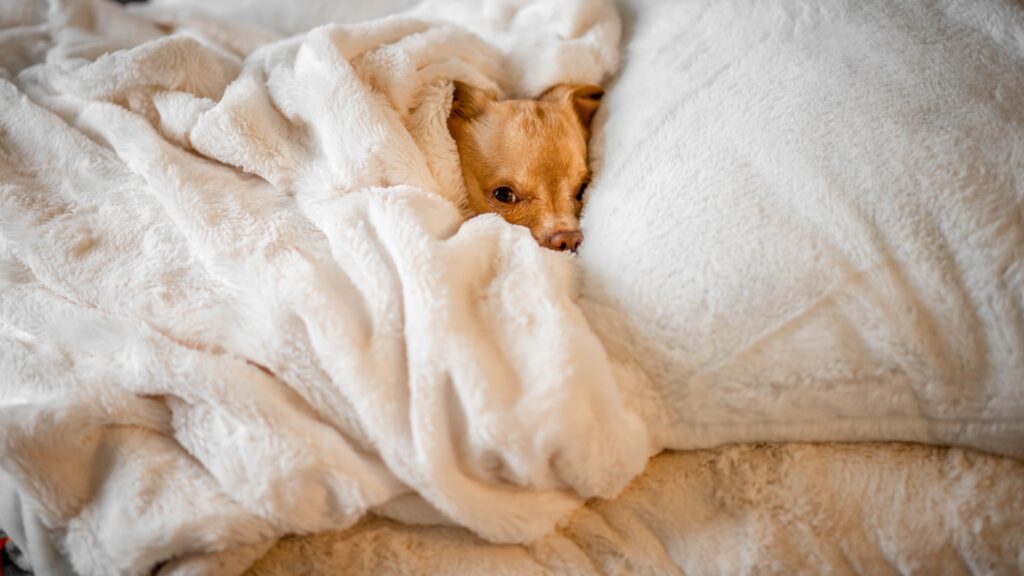The Pekingese is a magnificent little dog known for its magnificent fur. Its fur is so known that the Pekingese is also known as the lion dog. But fur like that has its bad sides. You might have caught your Pekingese shedding and wonder why that happens.
Pekingese shed constantly throughout the year, but this is exacerbated during spring and autumn. The reason for this is a process called “coat blowing”. Sometimes, Pekingese shed outside these expected times. There are a few reasons for this.
- The Pekingese – What Kind Of Coat Does It Have?
- Does Pekingese Shed?
- Reasons For Your Pekingese Shedding
- How To Stop Your Pekingese From Shedding
The Pekingese – What Kind Of Coat Does It Have?
The Pekingese is a small dog, with a compact body, and a fluffy coat. It has a wide flat face with bright eyes set wide apart, making the dog look really cute. The Pekingese hair is made of a long double coat made out of an undercoat and a top coat.
The undercoat is made of soft and densely packed hair. Its purpose is to act as an isolator that keeps the dog warm in the winter and cool in the summer.
The top coat is made of long, straight, fluffy hair that is coarse to the touch. Its purpose is to act as a guard hair that protects its skin from the sun, dirt, and insects. It also determines the color of the Peke.
The coat of the Pekingese comes in a variety of colors, but its face is covered in a black mask.
Does Pekingese Shed?
Most dogs lose their puppy coat around 4-6 months of age. After that period, their adult dog coat forms and starts shedding.
Pekingese shed throughout the whole year, but there are two instances when this shedding will increase. Those periods are spring and fall. The shedding happens because a change of coat is needed to adapt to the temperatures.
During fall, a process called “coat blowing” happens that helps the undercoat grow big enough to protect the dog from the cold.
During spring, this wooly coat starts falling off in order to get thinner and help the dog withstand the hot weather of summer.
Are Pekingese Hypoallergenic?
Sadly for all allergy sufferers, no dog is truly hypoallergenic. Even dogs with no hair can still cause allergies from their dead skin cells and saliva. But shedding does affect the number of dead skin cells released with the hair. Because of that, some dogs cause fewer allergies than others.
The Pekingese is not a hypoallergenic dog. It is considered a moderate-to-heavy shedding dog, and therefore not recommended for people who suffer from allergies.
Reasons For Your Pekingese Shedding
There are a few reasons that will cause your Pekingese’s shedding to increase. A bad diet, bad health, and parasites can all cause more shedding in your pup.
Bad Nutrition
A big reason why Pekingese shed is the lack of proper nutrients that keep the skin and coat healthy. Besides the increased shedding, a few other symptoms of malnutrition can be noticed. These include:
- Bad breath
- Weight loss
- Lethargy
- Fur loss
- Stunted growth
Besides the lack of nutrients, an allergic reaction to some foods can also cause shedding. This is why you should be careful of what type of food you give to your pup.
Improper hydration of the dog can also cause increased shedding as a symptom of dehydration. Other symptoms include:
- Dry eyes and skin
- Nausea
- Dry saliva
- Increased panting and drooling
Health Problems
Many diseases that attack the gastrointestinal tract, liver, kidneys, and immune system, can cause Pekingese shedding. You will notice a lot of symptoms like lethargy, aggressiveness, excessive barking, vomiting, diarrhea, and others.
Hormonal disturbances because of pregnancy can also be a cause. This happens because the mothers have less calcium and more estrogen. Both of those cause exacerbated shedding.
Another kind of hormonal disturbance is hypothyroidism. This is a disease of the thyroid gland that decreases its function. It can also cause a few other symptoms like:
- Lethargy
- Cold intolerance
- Dry and dead hair and skin
- Thinning of the coat
- Dark pigmentation on the skin
- Weight gain
- Slow heart rate
Parasites
There are many parasites that can attack your Pekingese and cause excessive shedding. One of these is worms like roundworms, hookworms, whipworms, and tapeworms. They all cause a general deterioration of the dog with dry and dull coats, itching, diarrhea, weight loss, lethargy, and other symptoms.
Fleas and ticks can also cause a lot of itching and shedding. If you have a Pekingese with long hair, you will notice some inflamed skin patches in the coat.
Scabies caused by the Sarcoptes scabiei mite can also cause itching, redness, and falling of the hair.
Stress
Dogs can get stressed just as much as humans can. Pekingese are loyal lap dogs, so if they are left alone for too long, they can develop separation anxiety. Other reasons for stress include loud noises, new pets in the home, and environmental changes. When dogs are stressed they will start licking themselves more which can cause more shedding.
You should watch out for some symptoms of stress and anxiety. These can include:
- Pacing
- Avoidance
- Aggression
- Destructive behavior
- Lethargy
- Drooling
- Tail between legs
Try to find out what is stressing your pup out. To calm it down, you can give your dog some valerian root.
How To Stop Your Pekingese From Shedding
The best way to prevent excessive shedding in your Pekingese is with grooming. This includes daily brushing, bathing, and visiting the groomer. But there are a few other things you can do as well.
Daily Brushing
Proper brushing is a must if you want your Peke to have beautiful and luscious dog hair. This brushing should be done daily and last around 15-30 minutes.
Brushing is important because it helps remove any tangles and knots of hair, as well as remove the excess hair and debris from the Pekingese coat. Brushing also helps spread the natural oils secreted by the skiing throughout the whole coat.
Make sure to brush through the areas that have thicker hair like the back, neck, sides, and back legs. You can use different kinds of brushes, but a slicker brush is probably your best option.
Regular Baths
A properly groomed Pekingese is one that gets baths regularly. It is recommended to give around one bath per month to achieve a clean coat. If your Pekingese gets really wet or gets too much dirt on its coat, it can be bathed sooner. Be careful to not over-bathe your Peke as it can lead to dry and itchy skin and ruin its coat.
Make sure to use a quality dog shampoo and avoid human shampoos because they can damage the dog’s skin. There are special shampoos made for certain coats. For example, there is a shampoo for wire coats that are perfect for breeds like the wire-haired Jack Russell. You can brush your dog’s coat after drying because the bath loosens up the hair and it will clean easier.
Groomer And Vet Checkups
Your Pekingese will need occasional visits to a professional dog groomer. The groomer needs to make sure the hair is trimmed up properly so your Peke looks good. They can give your Pekingese dog short hair during hot temperatures to keep it cool. Besides that, the groomer can also brush and bathe the dog.
Another person that can help you with the excessive shedding of your Pekingese is the veterinarian. They will try to find the reason for your dog’s shedding and give you a treatment option. Besides that, your vet will give you instructions on proper diet, as well as proper grooming for your pup.
Diet And Supplements
You should make sure to feed your Pekingese proper high-quality dog food in order to keep its skin and coat healthy. An adult Pekingese needs around one to one and a half cups of dog food every day. This should be split into two or more meals throughout the day.
Make sure the dog food is low in grains and high in protein. It also needs to have enough vitamins, minerals, antioxidants, and healthy fatty acids to keep the dog healthy and happy.
To make sure your pup gets enough nutrients throughout its day, you should give it some supplements. Fish oil supplements are perfect for keeping a healthy coat and skin.

Final Thoughts About Pekingese Shedding
The Pekingese is a small dog with a beautiful coat that is loved by many people around the world. Because it has a double coat, it is prone to shedding.
Pekingese are considered medium-shedding dogs and they shed year round. There are two instances when this shedding is increased – during spring and fall.
There are a few reasons that can cause excessive shedding in your Peke. These include improper nutrition, stress, parasites, and other health problems.
In order to prevent excessive shedding, there are a few things you can do. The most important one is to brush your Peke daily and give it regular baths every month. You can also go to a professional dog groomer to help you with this. You can also visit your vet in case the reason for this shedding is some disease. You should also provide proper nutrition and supplements.
FAQ
Does A Pekingese without hair Exist?
No. All Pekingese dogs have long hair that is made of a top coat and an undercoat. A shaved Pekingese is the only one that is without hair, but shaving the dog is not recommended.
Are Pekingese high-maintenance dogs?
Pekingese are considered high-maintenance dogs. Their coat needs regular brushing in order to reduce shedding. Other regular grooming practices like bathing, cutting nails, and brushing teeth are also important. They also need proper training due to their stubbornness.
Should Pekingese be shaved?
You should never shave a Pekingese. Or any dog with a double coat. By doing that, you will ruin its coat and destroy its function for cooling and heating the dog. Also, the Pekingese shedding will only get worse.
The Unexpected Hoax Of The Beautiful Cantonese Bear Dog
The Cantonese Bear Dog is a beautiful fluffy dog with a magnificent red colored coat…
The Coonhound Pitbull Mix: Guide to a Unique Crossbreed
People like having unique dogs and choose to mix two breeds to get the best…
Unveiling the Charming Cocker Spaniel Pitbull Mix: Complete Guide
Are you someone who adores dogs and is on the lookout for a distinctive and…
Top 10 Dog Breeds That Like To Sleep Under The Covers
Every dog owner probably noticed that not all dogs are the same when it comes…
The Fascinating World Of The Rottweiler Chihuahua Mix
Mixing purebred dogs is a common thing dog owners do to make their ideal pet….
Why Are Brindle Dogs Unpopular? Changing The Perspective
Dogs are differentiated by their breeds and traits. The many different colors make it easy…







